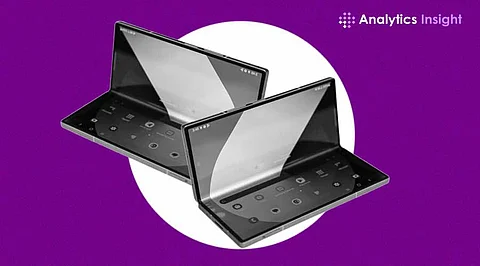

The tech industry is on the cusp of a revolution with the emergence of foldable tablets. These innovative devices bridge the gap between smartphones, tablets, and laptops, offering a unique combination of portability and functionality. As top manufacturers prepare to launch their next-generation foldable tablets featuring cutting-edge technology and sleek designs, the anticipation builds for the most exciting releases of 2025.
Samsung has been a pioneer in foldable technology, and the new Galaxy Z Fold Tab is expected to continue pushing the envelope. The new tablet is rumored to sport a slick ultra-slim design with improved hinge durability and is likely to be equipped with Samsung's vibrant AMOLED displays and an expansive 12.4-inch unfolded screen. Combined with enhanced multitasking features powered by Samsung's One UI optimization, this would allow users to switch effortlessly from one app to another.
The foldable Z Tab is also expected to support a stylus, with major updates for S Pen regarding its fluid responsiveness. The flagship performance is promised by the Snapdragon 8 Gen 4 processor coupled with a powerful performance through the availability of up to 16 GB RAM.
The new Mi FlexPad is expected to be the most cost-effective device in the foldable category. It features the latest technology and offers a foldable 12.5-inch OLED display, producing jaw-dropping visuals at 120Hz refresh rates.
The Mi FlexPad has been rumored to have the Snapdragon 8 Gen 3 chip along with RAM of up to 12GB. Xiaomi even plans to develop a multitasking interface and further app optimization with foldable display features. An apparent low-cost strategy under the Mi FlexPad could be expected to reshape the foldable tablet market and widen its target audience.
Lenovo is well known for foldables with the ThinkPad X1 Fold series they started in earlier years. The 2025 iteration of the X1 Fold is expected to deliver significant improvements in hardware and usability. Lenovo will hold to its 16.3-inch OLED display to be tailored for optimum usage while not forgetting to perfect its keyboard and touchpad integration for tablet-laptop purposes.
Backed by next-gen Intel processors, the focus shifts to better power management so that the ThinkPad X1 Fold 2025 will prove to be a tablet in the productivity category for professionals always on the go.
The buzz surrounding the much-anticipated MatePad Fold from Huawei is that it is very much expected to launch in China and internationally in 2025. Initially, rumors surrounding it were about a foldable OLED display with stunning visuals and high refresh rates. The device is supposed to run on Huawei's HarmonyOS, offering smooth multitasking and cross-device connectivity with the Huawei ecosystem.
Huawei MatePad Fold is said to sport a very thin and lightweight body, concentrating on creative tools and productivity. It might also boast flagship camera technology, making it stand out from other multimedia competitors.
Foldable tablets represent the next big leap in personal computing. By combining versatility with compact designs, these devices are changing how users interact with technology. As companies continue to address concerns such as durability, screen creases, and price points, foldable tablets are set to become more mainstream in 2025.
With industry leaders like Samsung, Xiaomi, Lenovo, and Huawei leading the charge, 2025 promises to be a pivotal year for foldable innovation. Whether for work, creativity, or entertainment, foldable tablets have been poised to redefine portable computing for years.
